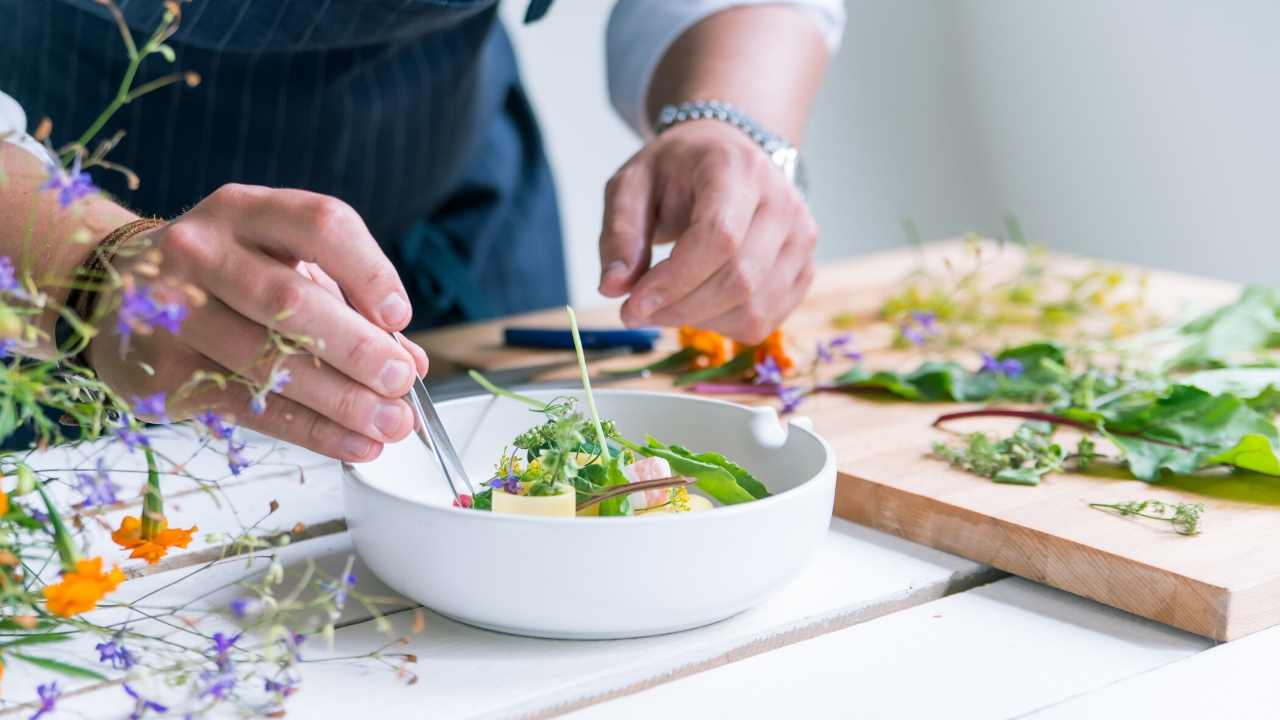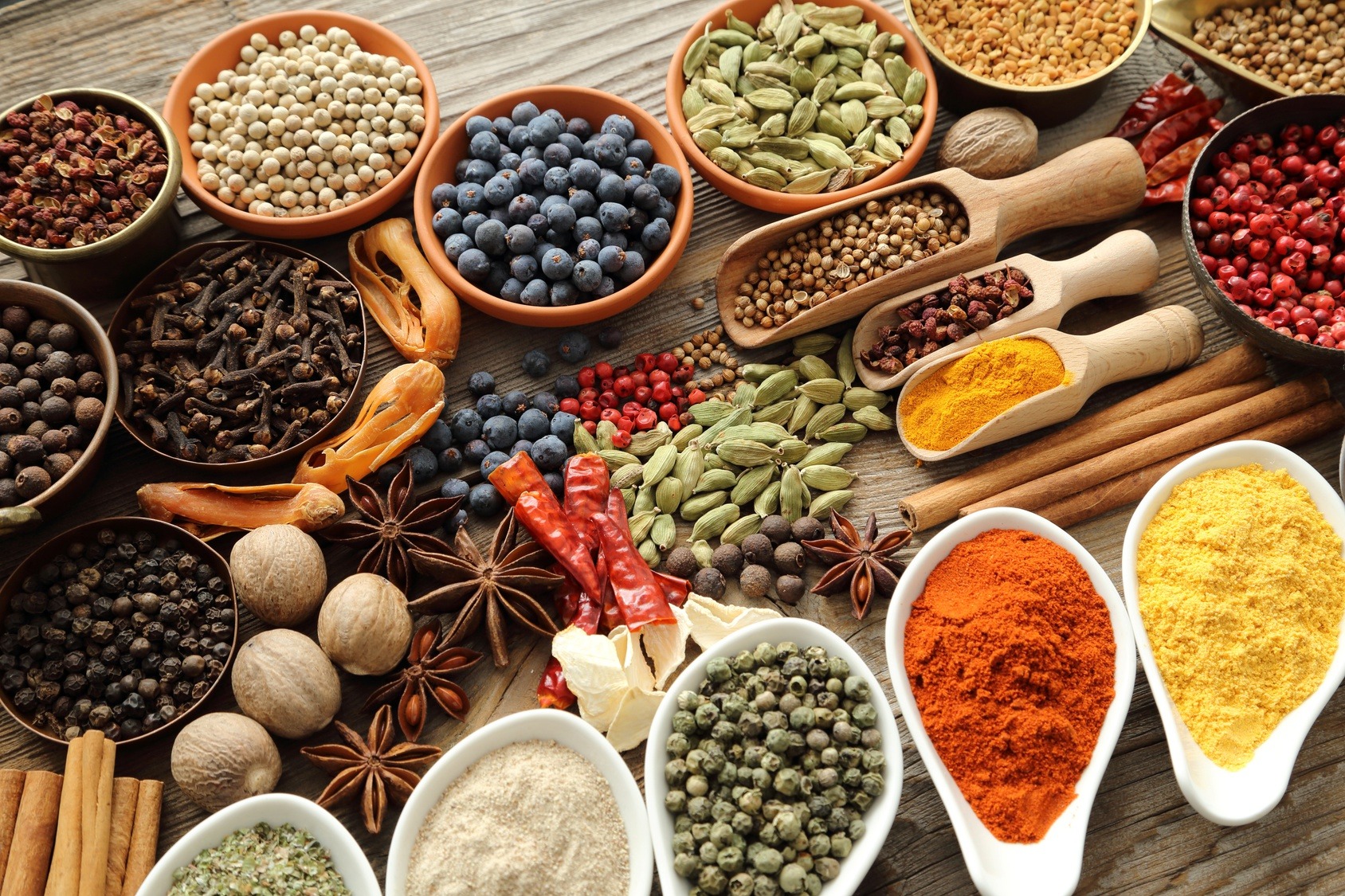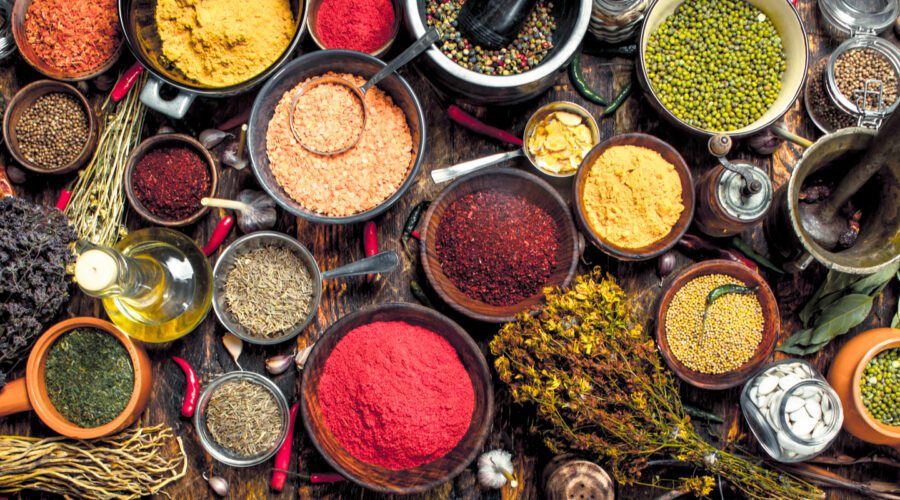Our aim goes far beyond delving into recipes and teaching culinary techniques; we intend to promote sustainable eating as an essential part of preserving humans’ relationship with nature. As such, we invite anyone who shares this same conviction or has a secret family recipe they would like to share with the rest of us to visit us online or contact us at [email protected] for all collaborations and submissions. Let’s show appreciation for those that dedicate their lives using natural deliciousness to establish meaningful human bonds through cuisine!
For now, love yourself and enjoy this one ...
By Gillian Ehrman
The sweet, pungent smell of plants on this hot and humid day in Cambridge takes me back to a hot September afternoon in Deep East Texas, walking around my university's gardens. I remember Carolina Allspice from a past plant walk; I close my eyes, breathe in, and can smell the almost cinnamon-like bark now crushed lifeless in my hands. Is there a connection between Carolina allspice and Jamaican allspice? Well, readers, unlike the plant that Jamaican allspice (Pimenta dioica) comes from, Carolina allspice (Calycanthus floridus) is a deciduous shrub, and the berries are poisonous when eaten. The power of association piqued my curiosity. Will you join me on this deep dive into Jamaican allspice?
The first written record of allspice occurred in Columbus's journal from his voyage to the Americas in 1492. He was on a mission to find the illustrious peppercorn vine, Piper nigrum, a rare and expensive commodity back in the day. Thinking he had struck gold, Columbus was greatly disappointed when he returned to Spain with the far less valuable allspice. The Spanish gave these pepper-like berries the botanical name Pimenta, the Spanish word for "pepper." But enough about Christopher Columbus, let's answer some questions about the allspice tree. What is, in fact, this spice called 'allspice' and how does it grow?
Allspice is the dried, unripe fruit of Pimenta dioica, a tropical evergreen native to Jamaica, Cuba, Guatemala, Honduras, and Southern Mexico. Here at Curio Spice Co. we source our allspice berries from Guatemala and occasionally Jamaica. The bark is a smooth gray/silver color and intensely aromatic. The sensation of the allspice tree's bark is similar to the spectacular smell of the bark of Carolina allspice. This is the only similarity between both plants. It is part of the Myrtle family. Clove, guava, and eucalyptus are other notable members of this plant family. Allspice trees are dioecious, meaning the male and female reproductive organs are on separate trees. The female flowers provide the fruit. When allspice trees bloom with their clusters of tiny white flowers, the warm, clove-like perfume in the air is one of the most beautiful aromas imaginable. The first harvest begins when the female tree reaches eight years old and can continue bearing fruit for about 100 years.
The fruit is picked before ripening, when the berries have their full aroma due to the volatile oil's eugenol, methyl eugenol, and beta-caryophyllene. The berries are then sun-dried or machine dried. Fresh Allspice berries have no culinary use, even in their native lands. The allspice berry is dark brown when cured and dried with a slightly reddish hue. When ground allspice berries release distinctive aromatic notes of clove, cinnamon, and nutmeg.
Jamaica's native Arawak and Taino peoples used the berries to flavor and preserve meat, which they smoked over wooden-framed barbecues. Maroon cuisine, such as jerk-spiced meat, amalgamates three distinct cooking styles from Spanish, Taino, and freed West African slaves. An essential ingredient in this cuisine is allspice, thyme, scotch bonnet chilies, and ginger. Jerk is a representation of the Jamaican people's triumph of the militant tendency over an oppressive ruling class. This fusion of cultures through jerk is an example of how food has brought people together for centuries. Our friend, Tamika Francis from Food & Folklore, pays homage to global food traditions. I highly suggest checking out this link (https://www.youtube.com/watch?v=sQr5iGFu2jI) where she is featured on WBUR CitySpace cooking up a hearty Rastafarian Ital Stew made with veggies, spices including allspice, and creamy coconut milk.
Allspice is used in both sweet and savory applications, its uses span from cake and cookies to seafood and red meat. It is famously an ingredient in Scandinavian marinated raw herring and delightfully complements pickles, pates, and smoked meats. The volatile oil eugenol found in allspice is found in cloves and is surprisingly found in basil too. As it is summertime, I suggest you all go to your herb garden, rip off a piece of basil, and crush it with your fingers. Do you smell that clove-like aroma? Nature is full of surprises for the curious that are willing to search! No wonder why allspice pairs so well with tomatoes. I have included one of my all-time favorite Curio recipes for mushroom pate. Unsurprisingly the secret ingredient is...allspice. Also included are links to some fantastic products and blends from Curio which contain allspice, I highly suggest checking them out.
| Traditional Pickling Spice | Creole Spice | Seti Berbere |
1/2 teaspoon allspice berries
Put the oil and shallots into a large skillet set over medium-high heat. Sprinkle with a pinch of salt and saute, stirring occasionally, until the shallots are tender and translucent. Add the garlic and cook until fragrant, about a minute longer.
Add the mushrooms to the pan, followed by the butter. Cook, stirring occasionally, until the mushrooms release their juices. Sprinkle the Filipino Adobo over the mushrooms, then add the tarragon and thyme, crumbling them between your fingers. Add half the ground allspice-clove powder, several grinds of black pepper, and a big pinch of salt. Cook until the mushrooms are very tender, browned, and glazed-looking.
Add the mezcal and stir to scrape up any browned bits stuck to the bottom of the skillet. Cook until the mezcal has evaporated, about 2 minutes. Remove the pan from the heat and stir in the lemon juice. Taste and add more salt if needed.
Transfer the mushroom mixture to the bowl of a food processor fitted with the metal chopping blade. Let the mushrooms cool for 5-10 minutes.
Pulse a few times until the mushrooms are 'minced.' Add the cream cheese in chunks and another big pinch of the allspice-clove powder, then process until the mixture is smooth.
Taste and add more salt, black pepper, or lemon juice as needed. Transfer the pate to a lidded container. Cover and chill for at least two hours so the flavors can meld and the pate can firm up.
References
Gambrelle, F., Boussahba, S., & Michalon, M.-F. (2008). allspice. In The flavor of spices (pp. 42-42). essay, Flammarion.
Hemphill, I., & Hemphill, K. (2014). allspice. In The Spice & Herb Bible (pp. 61-67). essay, Robert Rose.
Lawson, J. (2008). allspice. In The spice bible: Essential information and more than 250 recipes using spices, spice mixes, and Spice Pastes (pp. 184-185). essay, Stewart, Tabori & Chang.
O'Connell, J. (2018). allspice. In The book of spice: From anise to zedoary (pp. 24-30). essay, W.W. Norton and Company.
Frequently Asked Questions
How to Store Spices
Keep them in an airtight, dry container away from heat or light.
To store spices for longer periods of time, place them in a dark cupboard. This will help keep them fresh and prevent any deterioration due to oxidation.
Store your spices in a cool, dry area away from direct sunlight. A heater or window can cause the spice to lose its aroma and flavour.
Spices are best stored in an airtight glass jar or tin. Avoid storing spices in plastic containers.
After opening the seal, make sure to inspect it again. Humidity can cause spoilage.
Don't throw out any spice leftovers. Instead, use them up by adding them to other dishes. You can even freeze them to extend their shelf life.
What is the difference in curry and curried?
The spellings are the same. Both words refer the same thing: Indian food that uses meats and vegetables along with different seasonings.
Curry comes from Hindi word kari that means "to rub". It refers how spice mixtures are applied to food. Curried foods are typically cooked until browned.
Curried dishes were once reserved for special occasions, but today, they're enjoyed frequently throughout India. They can include chicken, beef, lamb, fish, vegetables, and rice.
Curried dishes are typically served alongside plain white rice. Other common accompaniments include raita (a yogurt sauce) and chutney (a sweet relish).
What Herbs or Spices go Best with Potatoes
A potato is a delicious side dish for almost all meats. You might have been cooking potatoes for a while and know that there are other ways to prepare them.
These versatile veggies can be used as a side dish in many dishes. But did you know that numerous spices and herbs go well with potatoes?
Spice up your following potato recipe with these delicious recipes.
What does Thai spice serve?
The term Thai spice is a common phrase that we've heard a lot, but don't really know what it means. We are left wondering why we don't eat more Thai spice when our mouths water.
It's much more than a spice. It is an essential ingredient that brings flavor and depth into dishes that might otherwise be boring.
Many recipes call for Thai spice, but only a few have the actual thing. Let's talk about how to make sure you add these amazing flavors to your meals.
Thais have been using spices and herbs to flavor food and drinks since ancient times. Thai is the Sanskrit word that means "to cook".
Even today, most Thais prefer to eat spicy foods. This preference is often explained by the hot climate in Thailand that makes it difficult to stay warm while drinking hot drinks. Thais also consume more chili peppers that Americans or Europeans.
It is a great way to learn more about Thai spices. You'll find many ingredients there, including fresh basil leaves, dried chilies and curry paste.
You may also find whole peppercorns.
There are two types of spices in Thai cuisine: dry and wet. Wet spices are ground finely, while dry spices are typically ground.
Dry spices can be added to any dish. Ground red pepper can be sprinkled on chicken soup, for example. In order to make a paste out of wet spices, oil or butter is often used.
Wet spices are often used in sauces, marinades, and dressings. Fish sauce, oyster sauces, sesame and sesame olive oils, curry paste and hoisin are some of the most common wet spice options.
If you want to try making Thai dishes at home, you need to know which spices go well with certain ingredients.
Red pepper flakes should be used if you're using beef. Use white pepper if you are using seafood like shrimp.
If you don't live near an Asian market, you can order online. You will find everything from dried chilies to exotic herbs and spices here.
You might want to try these Thai recipes next time you feel hungry.
What is the difference between cooking Whole and Ground Spices? Ground Spices?
There is no difference between cooking whole spices and with ground spices. After harvesting, spices are ground. So there is no difference in quality.
However, the price difference is substantial. Whole spices are more expensive because of the labor required to process them. The flavor is well worth the effort.
Buy whole spices and you'll often receive additional discounts. You might get a discount if your entire bag is of cinnamon sticks.
The same goes for nutmeg, cloves, ginger, cardamom, etc. This can help you save money on spices if you buy them in bulk.
Whole spices can also last longer than the ground spices. This is because ground spices lose their potency quickly due to oxidation.
The main reason we recommend whole spices over dried is that they can add lots of flavor to recipes.
A delicious curry can be made with whole turmeric as opposed to ground turmeric. For chicken dishes, whole coriander seeds can be ground to make a spice blend.
Grinding spices takes time. If you're buying whole spices it makes sense for you to buy large quantities. This will ensure that you don't run out of spices quickly.
What are the Primary Flavours In Thai Cooking?
Thai cuisine includes several distinct regional cuisines. These include Northern, Central, Southern, Eastern, Western, and Northeastern Thai food. Each region has a distinct flavour profile.
Thai food can be described as sweet, salty or sour.
Thais love sweetness because it makes their dishes more delicious. Thai cuisine relies heavily on sweet ingredients, such as coconut milk (gula melaka), and palm sugar.
Sourness is also very popular in Thailand. Hot dishes are often served with sour foods. This helps to balance the heat.
Thai food has a lot of spicy ingredients. Thai cuisine uses a lot of spices, including galangal ginger root, chilli pepper, and garlic.
What are the most delicious Thai spices?
The best Thai spices include lemongrass, galangal, coriander, turmeric, cinnamon, and ginger. You can also use clove, cardamom black peppercorn, clove, cardamom clove, cardamom, fennel seed, star anise, cloves and cayenne pepper as spices.
Some other valuable spices include rose petals, bay leaves, curry leaves, pandan leaves, kaffir lime leaves, vanilla beans, tamarind pods, lemon grass, basil, and mint.
Statistics
- It has been estimated that around 1,000 tons of pepper and 1,000 tons of other common spices were imported into Western Europe each year during the Late Middle Ages. (en.wikipedia.org)
- According to the McCormick Science Institute, indigenous Indian spices were cultivated as early as the 8th century BC in the gardens of Babylon. (spicecravings.com)
- According to a recent survey, professional chefs and many home cooks use spices; usage has only continued to grow from 2011 to now. (hospitalityinsights.ehl.edu)
External Links
[TAG35]
[TAG38]
[TAG40]
- Amazon.com. Spend less. Smile more.
- Amazon.com : Morton & Bassett Whole Nutmeg 1.9 Oz : Nutmeg Spices And Herbs : Grocery & Gourmet Food
[TAG43]
How To
How can I store my cooking spices?
Here's how to store your cooking spices for maximum performance. First of all, we need to establish an understanding of the science behind the storage of foodstuffs.
Because spices lose their flavour when exposed to the sun, they are best kept out of reach from light. This is caused by oxidation, which happens when oxygen and organic compounds combine like spices.
Spices should be kept in the dark cupboards and sealed tightly in airtight containers to prevent oxidation. Spices lose their flavor quickly if these conditions don't exist.
You can preserve the flavor of spices by keeping them in sealed jars, away from direct sunlight.
For a flavoured beverage, add herbs and spices. To make a cinnamon-flavored drink, combine two teaspoons of ground ginger with half a cup of warm water. Stir and mix well. Add a squeeze of lemon juice and serve immediately.
Dry herbs and spices can also be used in soups, stews or casseroles. Spread the spice mixture evenly onto the dish. Allow it to sit for between 5-10 minutes before serving.
As snacks, leftover cooked vegetables and fruits can be added into your favourite recipes.
For the best flavor of fresh herbs, you can chop them up or tear them apart and then add them to your favorite foods. You can also freeze herbs and spices by placing them in ice cube trays or muffin cups and freezing them. Once frozen, transfer to freezer bags or zip-top plastic bags.
Resources:
 |
[TAG46]LET ME KNOW IN THE COMMENT SECTION WHAT YOU ALL WOULD LIKE TO SEE ME TALK ABOUT IN OUR NEXT VIDEO | I REALLY APPRECIATE YOU ALL!! THANK YOU FOR 168K |
 |
[TAG47]Better Sleep, More Energy, Higher Consciousness - START YOUR FREE 2-WEEK FLFE TRIAL NOW (no credit card needed) https://tm179.isrefer.com/go/TryFLFEfree/In |
 |
[TAG48]My Recipe and Vlog Channel Link:- https://www.youtube.com/channel/UCi5pSJeRu1fbXK4bzIVgSkw Hello Friends, Welcome back to my another video! Today […] |
 |
[TAG49]definition of spices |
 |
[TAG50]CARDAMOM E-AUCTION SPICES BOARD OFFICIAL |
 |
[TAG51]This Is The Situation Room, Kenya's Biggest Conversation! HOSTS: Eric Latiff, Ndu Okoh & CT Muga PRODUCER: Ednah Ombaso EXECUTIVE PRODUCER: Tom |
 |
[TAG52]Subscribe to my channel ▶https://bit.ly/30eqjsu Uncle Rural Gourmet's secret recipe of hot pot, […] |
 |
[TAG53]Important spices in cooking |
 |
[TAG54]Just a quick live thank you to everyone who has supported this wacky little channel of ours. Join me (and whoever else on the team is still awake) to drink |
 |
[TAG55]India accidentally hired a DEA agent to kill American citizens, federal prosecutors allege. The DOJ filed charges against a man they allege was working with |
 |
[TAG56]https://www.letsdig18.com/ for shirts and more |
 |
[TAG57]Herbs, spice & everything nice, these blog and articles explain the many uses of spices, including spices for weight loss, spices for brewing, and how to store |
 |
[TAG58]something feels VERY WRONG!!! Link for Patreon/Discord community is here. This is to access our private community with weekly live calls and many other |
 |
[TAG59]Pepper imports in August were unusually high at 3,800 tonnesRising imports have kept black pepper prices steady in the domestic market over the past few days, |
 |
[TAG60]Plantation in São Mateus, Espirito SantoBrazil remains stable and firm; expected to slowlymove at upward trend. Still seeing difficulties in securing raw |
/spices-5689d3013df78ccc1533efad.jpg) |
[TAG61]spices | Visit our blog for recipes, cooking tips and techniques as well as our staff's favorite eats and travel adventures. |
 |
[TAG62]Over the past week, black pepper prices have slightly increased by about 1,5% from 73,000 - 74,000.The largest market, China, has resumed purchasing along |
 |
[TAG63]INTERNATIONAL cloves prices have held mostly firm in recent weeks as farmers at origin remain reluctant to lower their pricing ambitions and exporters appear |
 |
[TAG64]For the second year in a row Vietnam became the biggest importer of brazilian black pepper, overcoming traditional destinations like USA and also Germany.USA |
 |
[TAG65]This spice blog writes about Indian fenugreek, Canadian coriander, Egyptian dill weed, Syrian Aleppo pepper, Granada nutmeg, & more from around the world. |
 |
[TAG66]August 28, 2023Likely that Vietnam's pepper exports in the first 8 months of the year will reach around 183-185,000 tons. If the forecasted annual pepper |
 |
[TAG67]- In coming time, world pepper market will increase due to reduced supply (low price, low yield due to many old trees, reduced interest in farming due to |
 |
[TAG68]As prices of cardamom rise, India is in danger of losing its export markets to the cheaper Guatemalan cardamom. Even the upcoming festive season may not help |
 |
[TAG69]World of Spice is your online store for a massive range of High Quality Herbs Spices and Seasonings. Wholesale, Foodservice and Catering High Quality Herbs |
 |
[TAG70]KEY HIGHLIGHTSAugust 11th 2023The pepper market this week showed a mix response with only Malaysian local white pepper price reported with a decrease.The |
 |
[TAG71]As demand outstrips supply and imports become expensive, black pepper prices have risen, prompting growers to resort to hoarding in anticipation of bigger |
Did you miss our previous article...
https://belovedsaffron.com/spices/montral-lamb-kofta-with-tahiniyogurt-sauce
.png)





